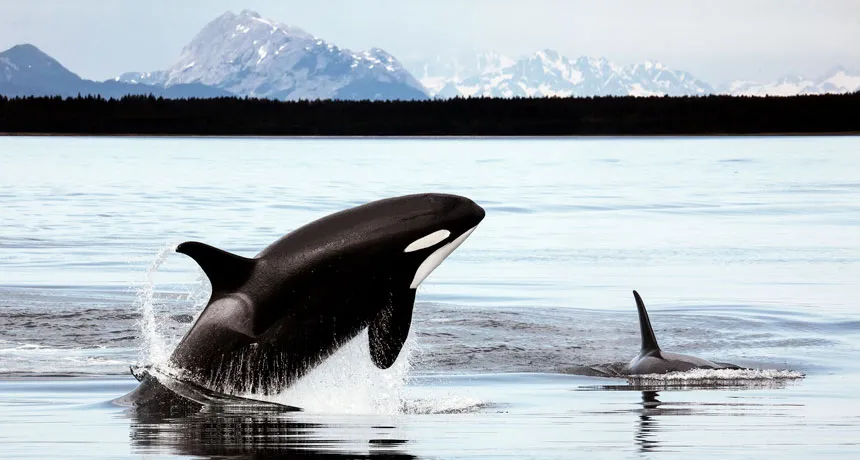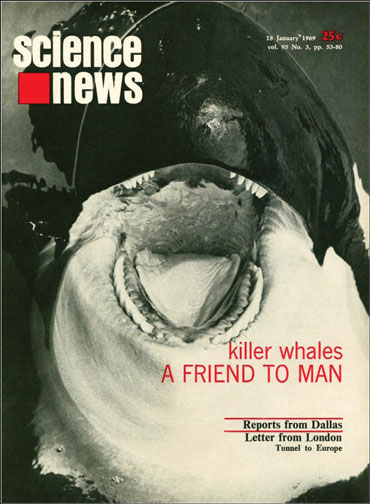50 years ago, scientists studied orcas in the wild for the first time
Excerpt from the January 18, 1969 issue of Science News

IN BLACK AND WHITE Killer whales captured off the coast of British Columbia in 1968 offered scientists the first chance to study the animals in their natural habitat.
Christopher Michel/Flickr (CC BY 2.0)
 The astonishing capture [of seven orcas off British Columbia] has made possible the first scientific study of killer whales in their more or less natural environment…. There is little doubt that the animals have a sophisticated language with which they can communicate with each other, but practically nothing is known about the complexity of their speech. —
The astonishing capture [of seven orcas off British Columbia] has made possible the first scientific study of killer whales in their more or less natural environment…. There is little doubt that the animals have a sophisticated language with which they can communicate with each other, but practically nothing is known about the complexity of their speech. — 





